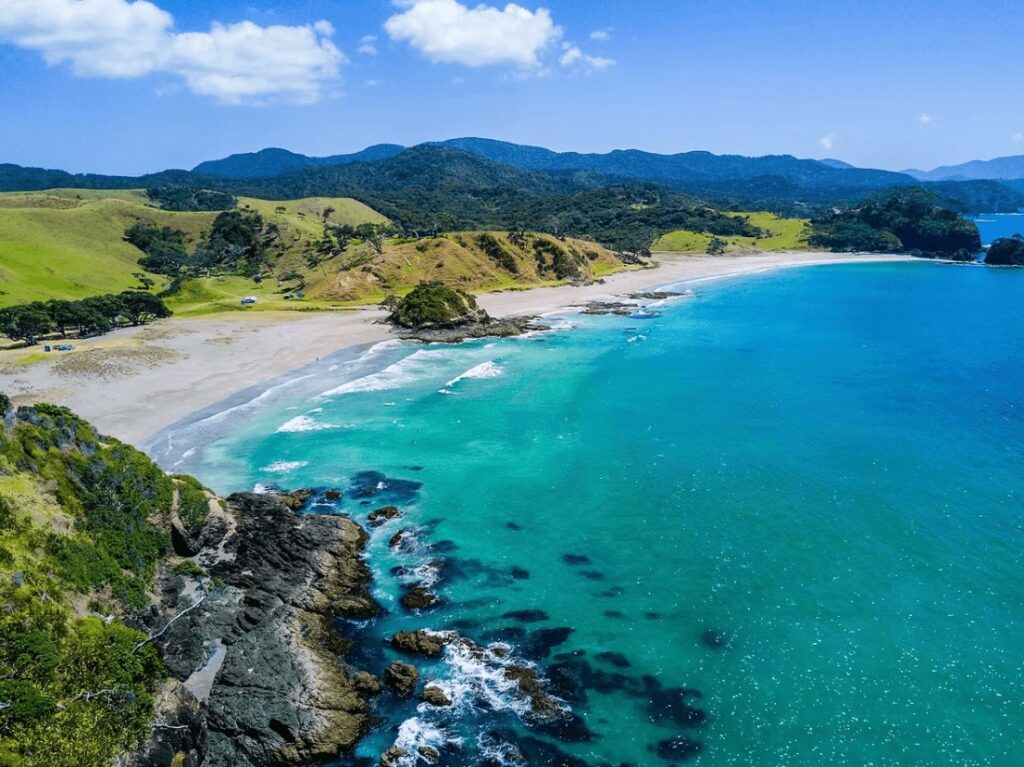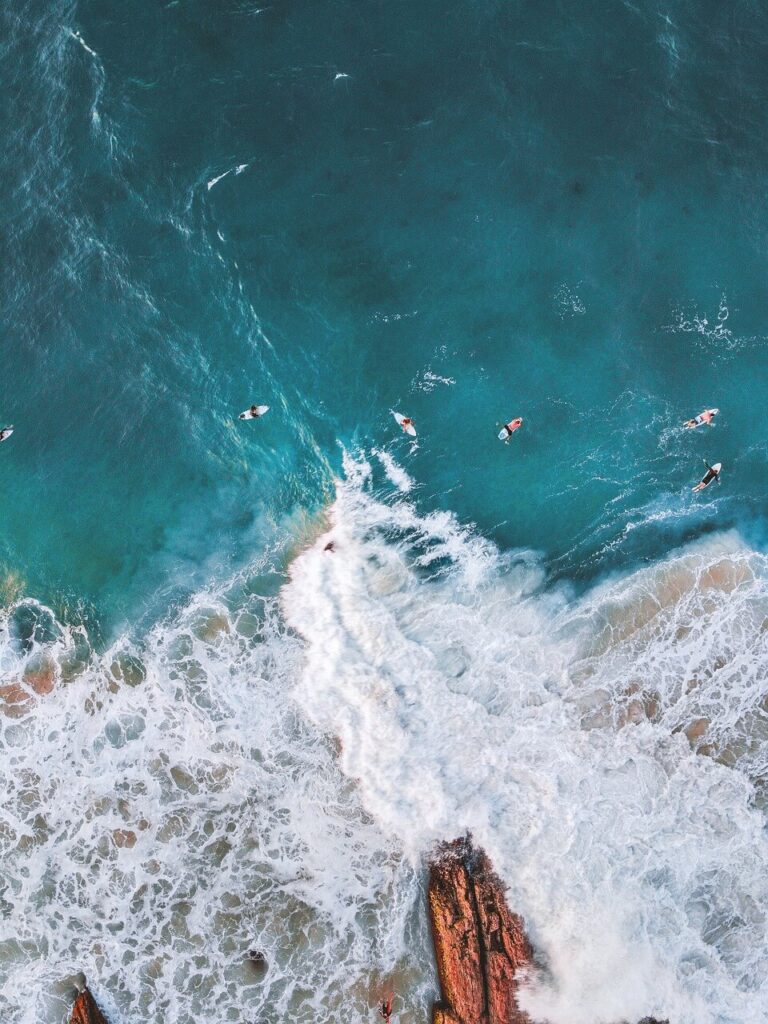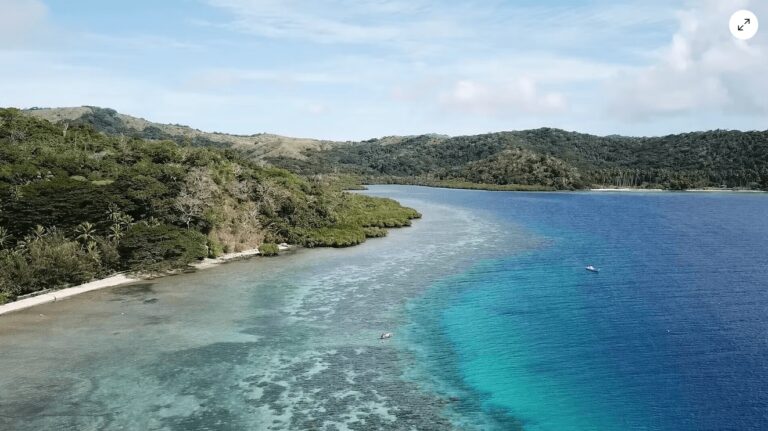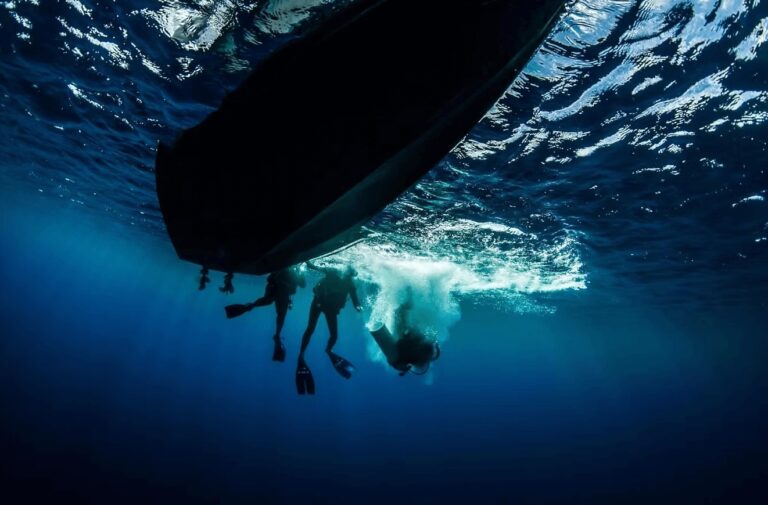How does climate change + ocean acidification impact marine life?
Discover everything you need to know about climate change and ocean acidification, including the impacts it is having on marine life and coastal communities.
Ocean acidification is a pressing environmental issue that has far-reaching implications for marine ecosystems and the communities that depend on them.
It refers to the gradual reduction in the pH of the world’s oceans. This is primarily driven by the absorption of excess carbon dioxide (CO2) from the atmosphere.
Since the onset of the Industrial Revolution, human activities such as the burning of fossil fuels and land use changes have dramatically increased the concentration of CO2 in the air.
As this greenhouse gas is absorbed by the oceans, it undergoes a series of chemical reactions that lead to a higher concentration of hydrogen ions, making the seawater more acidic.
This decrease in pH disrupts the delicate balance of ocean chemistry. It has particularly devastating effects on calcifying organisms like shellfish, corals and certain plankton species. These rely on carbonate ions to build and maintain their calcium carbonate structures.
As these building blocks become less abundant, it becomes increasingly difficult for these creatures to form and sustain their protective shells and skeletons.
The impacts of ocean acidification extend far beyond just these calcifying organisms, however. The disruption to the marine food web can have cascading effects on the behaviour and survival of other marine life. This includes commercially important fish species.
Economies and communities worldwide that depend on healthy ocean ecosystems for food, livelihoods and cultural traditions are now facing an uncertain future as ocean acidification continues to intensify.
In this article, we’ll explain everything you need to know about climate change and ocean acidification, including the impact it is having on our marine life and coastal communities.
For more insights into marine conservation issues, check out our collection of articles here. They focus on everything from microplastics and mercury pollution to coral bleaching and the Great Pacific Garbage Patch.

This article contains affiliate links, which means when you make a purchase through that link, we earn a small commission. Affiliate links come at no cost to you and ensure our content remains free!
Ocean acidification and rising surface temperatures
As CO2 concentrations increase, more of this greenhouse gas is being absorbed by the oceans. This drives up surface temperatures and causes alarming levels of acidification.
Although these two processes – warming and acidification – are distinct, they are intricately linked. Essentially, they work in tandem to create a deeply troubling scenario for marine ecosystems.
The rate at which the oceans can absorb CO2 is highly dependent on water temperature. Colder polar waters, such as those surrounding Alaska, are able to take up more of this carbon dioxide compared to the warmer tropical regions.
As a result, the surface waters in high-latitude areas like the Arctic are acidifying at a much faster pace than other parts of the world’s oceans.
Conversely, the warmer equatorial and subtropical zones are actually beginning to release stored CO2 back into the atmosphere. Ultimately, this exacerbates the overall greenhouse effect.
This uneven distribution of CO2 absorption and outgassing across different temperature gradients and latitudes is creating a patchwork of ocean conditions. In short, some areas are experiencing more severe warming and acidification than others.
The combined impacts of rising temperatures and acidification pose an existential threat to countless marine species. Warming waters can disrupt ecological balances, drive species to migrate to new areas and increase the prevalence of diseases and invasive organisms.
As these foundational species struggle, the ripple effects cascade through entire food webs. This potentially leads to an ecosystem-wide collapse in the most severely affected regions.
Ocean acidification, circulation patterns and upwellings
The regional differences in ocean acidification can be further explained by the complex interplay of ocean circulation patterns and their effects on the vertical mixing and exchange of waters throughout the marine environment.
Due to prevailing wind patterns and other natural phenomena, certain regions experience an upwelling of nutrient-rich but also more acidic waters from the ocean depths. This infusion of cooler, CO2-saturated deep waters into the upper ocean layers can amplify the effects of existing acidification in those coastal areas.
Under pre-industrial conditions, this upwelling of nutrient-rich deep waters was actually beneficial to coastal ecosystems. It provided a vital source of nutrients to fuel primary productivity.
However, in today’s climate-changed world with increasingly acidifying ocean waters, the same upwelling process can exacerbate the problem, further lowering the pH of surface waters.
In contrast, other regions, particularly in the tropics, are experiencing the opposite effect. Here, scientists have observed a slowdown in the exchange of carbon between deep and surface waters due to rising temperatures.
Warmer surface temperatures make it harder for wind-driven mixing to occur. This leads to increased stratification where the upper and lower ocean layers become more segregated from one another.
As a result, the upper ocean layers are becoming more saturated with dissolved CO2, unable to absorb anymore. Meanwhile, the deeper layers are becoming deoxygenated as less oxygen-rich surface waters are able to mix downwards.
This decoupling of the ocean’s vertical layers has serious implications for marine ecosystems, limiting nutrient circulation and oxygen availability in the depths.

The impact of ocean acidification on marine species
The process of ocean acidification has cascading effects that jeopardise the health and survival of countless marine species. This is especially true for those that rely on calcium carbonate to construct their protective shells and skeletal structures.
Clams, mussels, crabs and other shellfish are particularly vulnerable. The reduced availability of carbonate ions in acidified seawater makes it increasingly difficult for them to build and maintain their calcium-based exoskeletons.
Even tiny plankton that form the base of the ocean’s food chain, like delicate shelled phytoplankton, are struggling to calcify in some parts of the world. The impact ripples upwards, as these foundational organisms provide sustenance for larger marine life, from small fish to whales.
Beyond the direct effects on shell-bearing creatures, ocean acidification also disrupts other essential biological processes. Essentially, it alters the chemistry of the water in ways that impair the ability of many species to regulate their internal pH, reproduce successfully and carry out other vital functions.
Coral reefs, which host incredibly diverse ecosystems, are among the hardest hit. Over time, the acidic conditions slowly eat away at the calcium carbonate that forms their structural backbone.
Corals have a delicate, symbiotic relationship with microscopic algae that live within their tissue. They provide the corals with essential nutrients through photosynthesis.
However, when ocean temperatures rise due to climate change, this triggers the corals to expel these algae. This leaves the corals in a severely weakened state. It makes them more vulnerable to disease and less able to maintain and build up their crucial skeletal structures.
Ocean acidification further hinders the ability of corals to recover from these bleaching events.
As the oceans become more acidic, it reduces the availability of the calcium carbonate that corals need to grow back and rebuild their structures. This creates a devastating double-whammy.
First, the corals are stressed and weakened by the high temperatures. Then, their recovery is stunted by the lack of essential building blocks due to acidification.
A recent report from the Intergovernmental Panel on Climate Change paints a bleak picture. The panel projects that a staggering 99 percent of the world’s warm-water coral reefs could struggle to recover if global average temperatures rise 1.5°C or more above pre-industrial levels.
Without urgent action to address both ocean warming and acidification, the future of these marine ecosystems hangs in the balance.

The impact of ocean acidification on coastal communities
Ocean acidification poses a significant threat that extends far beyond just the environmental impacts. It is already starting to have serious economic and social consequences for communities around the world.
The issue is particularly acute for coastal regions that rely heavily on the fishing and shellfish industries. Here, the effects of carbon pollution are being felt in real-time.
The warming waters and increasing ocean acidification in some regions are negatively impacting revenue-generating fisheries. Some communities rely on these as a source of livelihood.
The impacts of climate change on marine ecosystems are already destabilising traditional fisheries across the globe.
Warming ocean temperatures have led to a proliferation of toxic algal blooms. These produce domoic acid – a potent neurotoxin that accumulates in the bodies of shellfish. This poses serious health risks and has forced the closure of numerous fisheries along the West Coast of the United States. The result is multimillion-dollar losses for local economies that rely on these natural resources.
The challenges faced by fisheries are only expected to intensify as the oceans continue to acidify. Eventually, it will disrupt the delicate balance that shellfish like oysters, clams and mussels require to grow their calcium-based shells and skeletons.
With the building blocks for their survival being stripped away, these keystone species face an uncertain future. In turn, this threatens the livelihoods of the fishing communities, seafood processors and coastal tourism industries that depend on them.

Addressing the root causes of ocean acidification
Ultimately, the best way to safeguard the long-term health of the oceans and the communities that depend on them is to address the root cause of the problem. Namely, climate change driven by human-caused greenhouse gas emissions.
By implementing ambitious policies to rapidly transition away from fossil fuels towards clean, renewable energy sources, we can limit future ocean acidification and give marine ecosystems a fighting chance to adapt and recover.
Aside from voting in favour of our oceans when elections roll around, you can support marine conservation organisations (either monetarily or through volunteer work).
Many of these NGOs highlight issues that are impacting our oceans. At the same time, they are putting much-needed pressure on governments and big businesses to mitigate the negative impacts of climate change.

PLAN YOUR TRIP WITH OUR FAVOURITE RESOURCES:
Find hotels and resorts via Booking or Agoda
Book tours and experiences via Viator or GetYourGuide
Find a rental car via Discover Cars
Book flights via Kiwi or Booking
Search for buses and trains via 12Go or Omio
Get travel insurance via SafetyWing
Buy a digital eSIM with Airalo
By purchasing through our links, you’ll be supporting our website at no additional cost to you
About the authors
We are a team of passionate divers and surfers with decades of combined experience in the water and travelling to all corners of the globe. After years of chasing waves and descending into the deep blue, we’ve created this resource to highlight sustainably run surf camps, eco-friendly dive resorts and conservation-focused ocean trips to help inspire your next adventure.
Eco Ocean Escapes was born out of a love of the ocean, an obsession with travel and a concern about the impacts of our adventures on the environments we explore. Despite the benefits that surf and dive tourism can bring to local communities, we recognised that ocean-based adventures are not always managed in a sustainable manner.
Through our articles, we hope to inspire those seeking a responsible surf or dive trip that is all about supporting local communities, preserving our coastal environments and the incredible marine species that inhabit our oceans.
-
Sustainable Surf Tourism and Respecting Local Communities
Surf tourism has exploded over the last two decades. With travel becoming more accessible and social media exposing hidden spots, once-remote breaks in Indonesia, Central America, Morocco and the Pacific Islands are now iconic stops on global surf circuits. While surf travel brings income, jobs and global attention to coastal towns, it can also disrupt…
-
Inspiring Citizen Science Projects for Surfers + How to Get Involved
As surfers, we are intimately connected to the ocean – its rhythms, its wildlife and its health. Because of this relationship, many of us are looking for meaningful ways to protect the marine environments we love. One of the simplest and most impactful ways we can do this is by joining citizen science projects. These…
-
Understanding Marine Protected Areas (MPAs): Why divers should care
If you’ve spent time underwater (as a diver or snorkeller), you’ve probably noticed something: not all sites are beacons of health. Some reefs appear vibrant and full of life, while others show signs of stress – broken coral, few fish or algae-covered rocks. One of the biggest factors shaping the health of our oceans is…
-
Costa Rica: Best Marine Parks for Scuba Divers + Eco Dive Resorts
Costa Rica is a paradise for eco-conscious travellers and underwater explorers are no exception. With its healthy coral reefs, pelagic-rich waters and some of the most progressive environmental policies in the world, the country is a dream destination for those who want to dive responsibly. We’ve been lucky enough to visit Costa Rica several times…
-
Eco-Diving: Best Destinations for Sustainable Scuba Travel
As humans inspired by the underwater world, there is plenty of incentive to protect our coral reefs. Here at EcoOceanEscapes, we want to do our bit to save endangered marine species and keep our oceans free of trash. One impactful action we can all take is to choose sustainable diving destinations. These are nations (or…
-
Eco-Friendly Diving: How to Be a Sustainable Scuba Advocate
Understand the environmental impacts of diving and sustainable scuba practices in this comprehensive guide to eco-friendly diving. Any diver will tell you that being underwater is an incredible experience. It’s a world that not everyone has the opportunity to explore and the encounters we have with marine creatures can be life-changing. Watching manta rays soar…

We are a team of passionate divers and surfers with decades of combined experience in the water and travelling to all corners of the globe.
After years of chasing waves and descending into the deep blue, we’ve created this resource to highlight sustainable surf camps, eco-dive resorts and conservation-focused ocean trips to help inspire your next adventure.
Eco Ocean Escapes was born out of a love of the ocean, an obsession with travel and a concern about the impacts of our adventures on the environments we explore.











